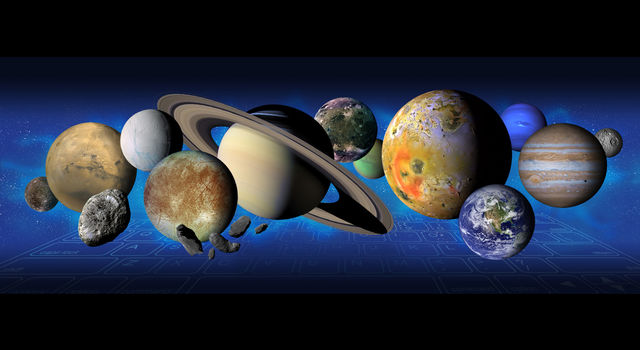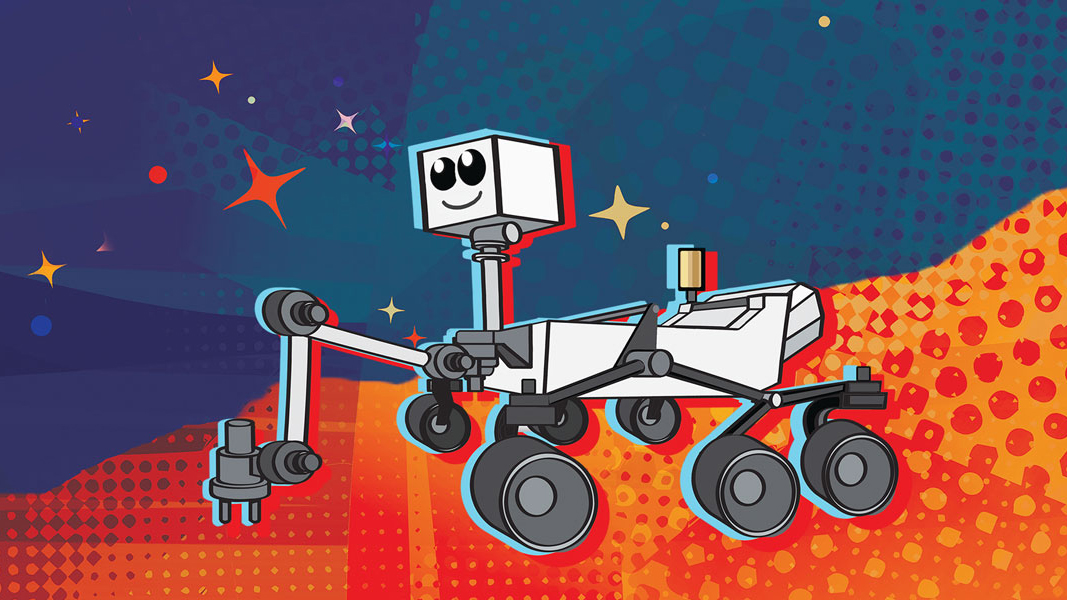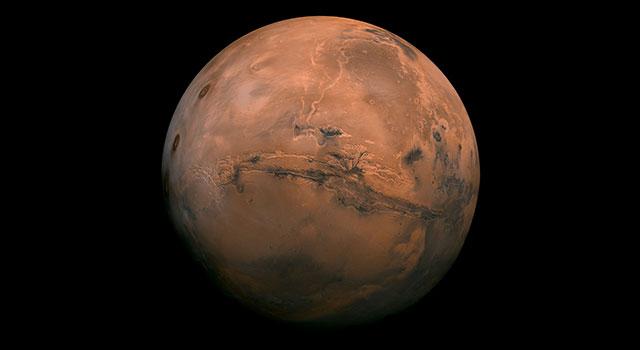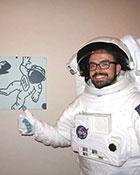Edu News | December 5, 2019
NASA Scientist for a Day Essay Contest Goes Far Out in 2020
NASA's Scientist for a Day Essay Contest is back for its 15th year, inviting students in grades 5 through 12 to investigate three distant worlds and write an essay about one they would want to explore further.
The worlds chosen for this year's contest are some of the most mysterious and distant in our solar system: Uranus' moon Miranda, Neptune's moon Triton and Pluto's moon Charon. Each has been visited by spacecraft during a single, brief flyby. NASA's Voyager 2 spacecraft flew by Miranda and Triton in the 1980s, and the New Horizons spacecraft flew by Charon in 2015. All three flybys provided the only up-close – and stunning – images we have of these worlds.
To enter the contest, which is hosted in the U.S. and more than a dozen countries, students must submit an essay of up to 500 words explaining why they would want to send a spacecraft to explore the world of their choosing. Essays can also be submitted by teams of up to four students.
Winning essays will be chosen for each topic and grade group (5 to 6, 7 to 8 and 9 to 12) and featured on the NASA Solar System Exploration website. Additionally, U.S. contest winners and their classes will have the chance to participate in a video conference or teleconference with NASA.
Entries for the U.S. contest are due Feb. 20, 2020, on the NASA Scientist for a Day website. (Deadlines for the international contests may vary by host country.) Visit the website for more information, including rules, international contest details and past winners.
For teachers interested in using the contest as a classroom assignment, learn more here. Plus, explore these standards-aligned lessons and activities to get students engaged in space travel and planetary science:
-
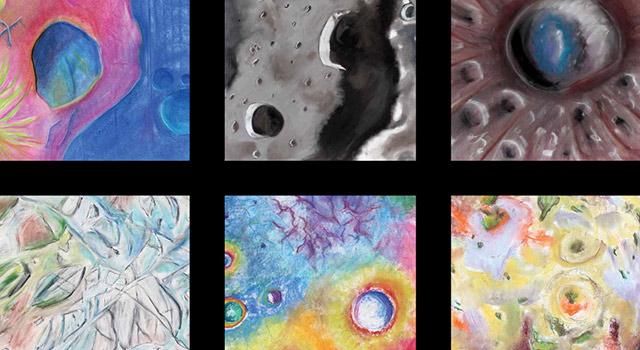
Art and the Cosmic Connection
Students use art to describe and recognize the geology on planetary surfaces.
Grades K-12
Time 1-2 hrs
-
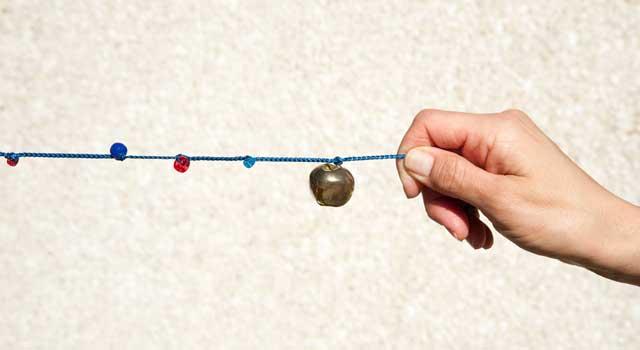
Solar System Bead Activity
Students create a scale model of the solar system using beads and string.
Grades 1-6
Time 30 mins - 1 hr
-
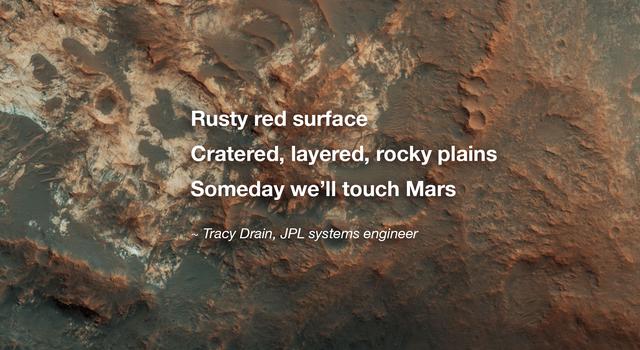
Planetary Poetry
In this cross-curricular STEM and language arts lesson, students learn about planets, stars and space missions and write STEM-inspired poetry to share their knowledge of or inspiration about these topics.
Grades 2-12
Time 1 - 2 hrs
-

*NEW* Planetary Travel Time
Students will compute the approximate travel time to planets in the solar system using different modes of transportation.
Grades 4-6
Time 30 mins - 1 hr
-
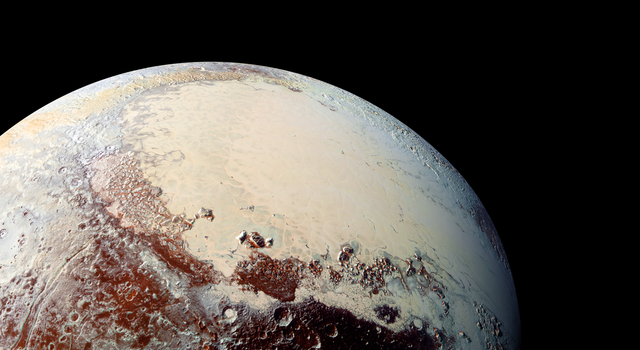
Sizing Up Pluto
Using measurements taken by the New Horizons spacecraft as it flew by Pluto in July 2015, students practice their math skills in a real-world application and see how new data can change scientific understanding.
Grades 4-12
Time 30 mins - 1 hr
-
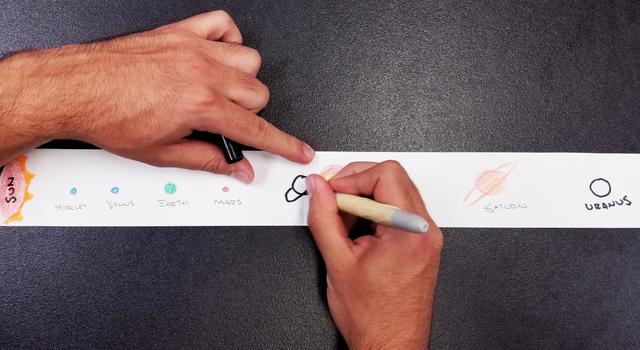
Solar System Scroll
Students predict the scale of our solar system and the distance between planets, then check their answers using fractions.
Grades 5-8
Time < 30 mins
-
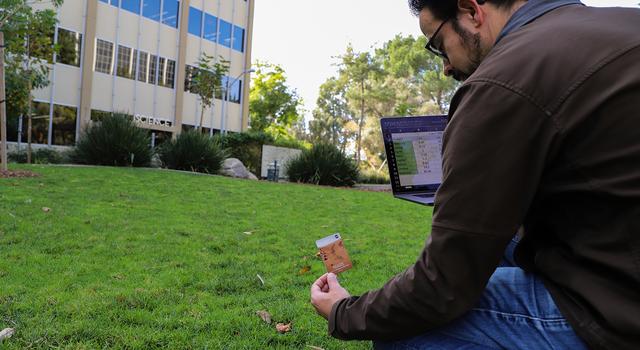
*NEW* Create a Solar System Scale Model With Spreadsheets
In this activity, students use spreadsheet software and their knowledge of scale, proportion and ratios to develop a solar system model that fits on a playground.
Grades 5-12
Time 30 mins - 1 hr
-
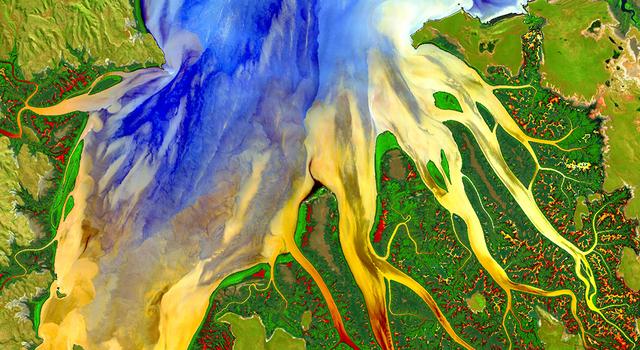
Using Light to Study Planets
Students build a spectrometer using basic materials as a model for how NASA uses spectroscopy to determine the nature of elements found on Earth and other planets.
Grades 6-11
Time > 2 hrs
-
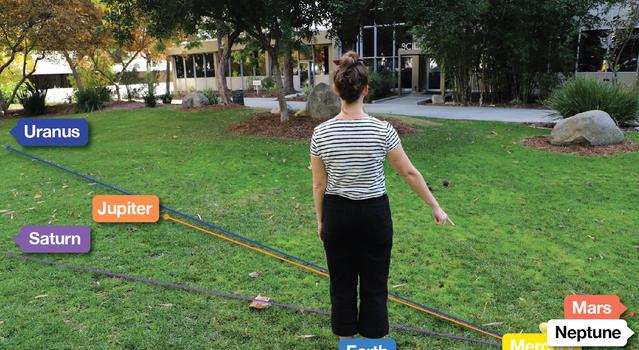
*NEW* Kinesthetic Radial Model of the Solar System
Students model the position of the planets around the Sun and then model viewing them from Earth on any given date.
Grades 6-11
Time 30 mins - 1 hr
-
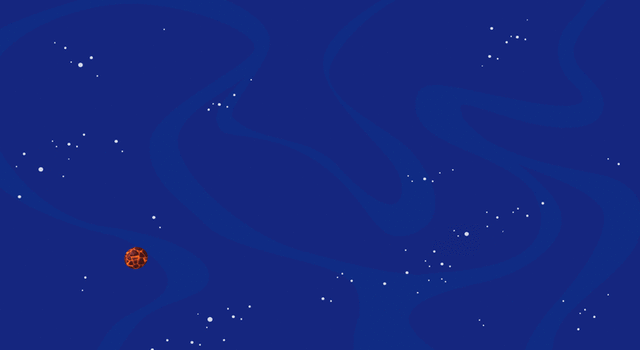
Dancing Uranus
In the dance of our solar system, one planet has moves like no other: Uranus. Find out how the planet's tilt puts it in a league all its own.
Type Video
Subject Science
-
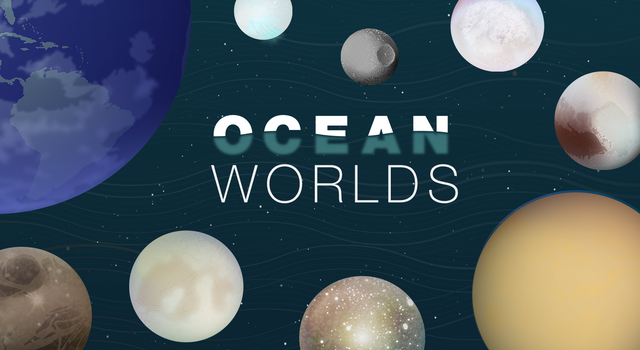
Ocean Worlds
Where might oceans – and living things – exist beyond Earth? Scientists have their eyes on these places in our own solar system.
Type Slideshow
Subject Science
TAGS: K-12 Education, Teachers, Educators, Students, Contests, Competitions, Essay, Language Arts, Science, Planets, Solar System, Moons
Edu News | October 22, 2019
NASA Essay Contest Winner: Naming Curiosity Mars Rover 'Changed My Life'
Students have just over one week more to enter NASA’s Name the Rover Essay Contest. While they put the finishing touches on their essays (due Nov. 1, 2019), meet the most recent naming contest winner, Clara Ma. Find out what Ma is up to more than 10 years after submitting her winning name for the Mars rover now known as Curiosity and why she says the experience changed her life.
› Read more on JPL News
› Find related resources for educators
Edu News | August 28, 2019
Students Invited to Name NASA’s Next Mars Rover
NASA is inviting students to help name its next Mars rover! Set to launch from Florida in the summer of 2020, NASA’s fifth rover to visit the Red Planet is designed to study past environments capable of supporting life, seek signs of ancient microbial life, collect rock and soil samples for a possible future return to Earth, and test technologies that could produce oxygen from the Martian atmosphere for use by humans one day. But before it can do that, it needs a name.
Following in the tracks of NASA’s four previous Mars rovers, the agency is asking students to suggest a name. The first Mars rover, which landed in 1997, was called the Microrover Flight Experiment until a 12-year old student from Connecticut suggested the name Sojourner, in honor of abolitionist and women’s rights activist Sojourner Truth. In 2004, a third-grade student from Arizona named NASA’s twin rovers Spirit and Opportunity. Curiosity, which landed in 2012 and is the most recent rover to visit Mars, was named by a sixth-grade student in Kansas.
To enter the Name the Rover Essay Contest, individual students must submit an essay of up to 150 words by Nov. 1, 2019. In their essay, students will need to propose the name they think best suits the rover and explain their reasoning. Judges will select three finalists (one each from grades K-4, 5-8 and 9-12) from every state and U.S. territory. From there, judges will narrow down the finalists further before they select a final name in the spring of 2020.
So what makes a good name? There are lots of ways to become inspired, but students should start by learning about the rover as well as the Red Planet and why we explore. But they shouldn’t stop there. There are many ways to spark ideas from students, including writing planetary poetry, making cosmic art, and having them build rovers of their own. Get students thinking and writing creatively, and encourage them to submit their essay!
The contest is open to U.S. residents enrolled in kindergarten through 12th grade in a U.S. school (including U.S. territories and schools operated by the U.S. for the children of American personnel overseas). Home-school students can also submit a name!
Explore More
- Video: Building NASA's Mars 2020 Rover – Watch on YouTube
- Send Your Name to Mars (sign up by September 30!)
- Mission to Mars Unit
- All About Mars for kids (also available En Español)
- Mars Facts and Figures from NASA Solar System Exploration
- Spacecraft Augmented Reality app – iOS | Android
TAGS: Mars, rover, contest, Mars 2020, K-12 education, STEM, language arts, essay, science, students




